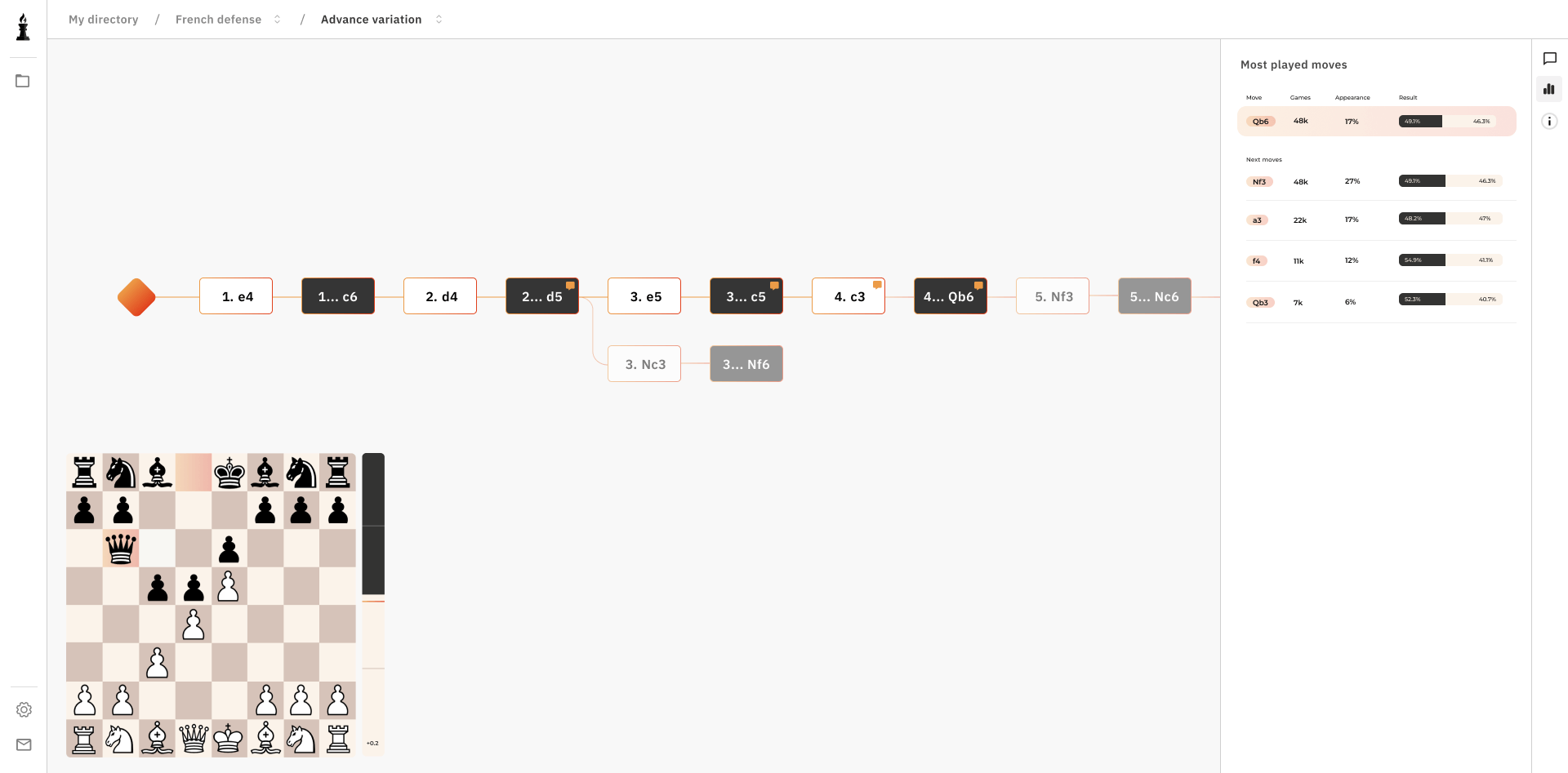
The new menu on the right shows the percentage of move occurrences in games, as well as the win rate percentage for each move.

The highlighted move represents the current move. The next four moves are the most commonly played following this sequence. You can see how many games in the database include this move, along with its occurrence percentage and win/loss rate.
Theorizing in chess isn’t just about knowing whether a strategy or opening is objectively correct and likely to win. It’s also about understanding how often it is applied in practice, meaning how players typically respond to a given move. This information helps you prioritize your theoretical study, enabling you to focus on what is most likely to be played and how to counter it effectively.
Frequently Asked Questions
Knowing the most likely next move is useful for beginner chess players?
Knowing the most likely next move useful for intermediate chess players?
Is knowing the most likely next move useful for competition preparation?
A much more powerful alternative to openingTree?
How to build a chess repertoire with the most commonly played moves?